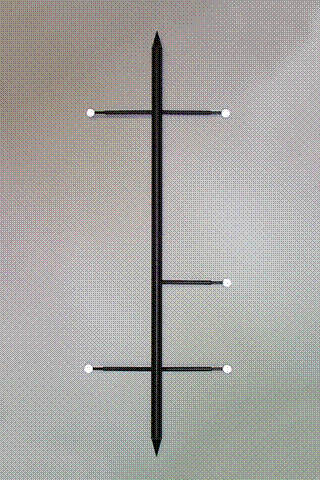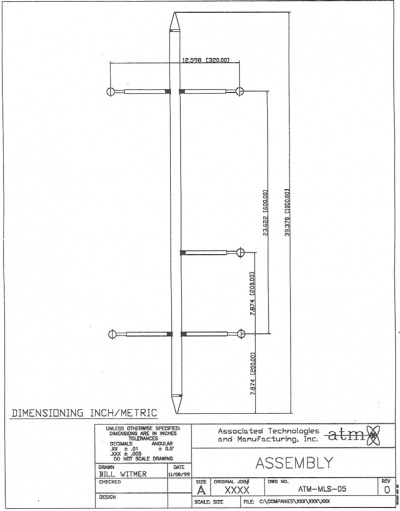CalTesterPlus Hardware
(Work in Progress)
| Language: | English • français • italiano • português • español |
|---|
MTD-2
The Mechanical Testing Device (MTD-2) is manufactured and supported by Motion Lab Systems, Inc. The MTD-2 is a precision-machined calibration-testing tool that can be assembled in less than a minute to create a calibration-testing object suitable for a number of 3D biomechanics laboratory tests.
The MTD-2 is comprised of the following items supplied in a plastic storage case:
-Handle
-Calibration-testing rod with two conical tips
-Five wands with retroreflective markers
-Base plate
All items, except the calibration-testing rod, are mechanically compatible with the MTD-1 design from Motion Lab Systems. The MTD-2 calibration-testing rod (at 904.64mm) is shorter than the MTD-1 and does not offer alternative marker wand mounting points.
In addition to its use with the CalTester software, the MTD-2 can act as a standard calibration object within any 3D measurement laboratory. The conical tips at the ends of the calibration-testing rod may be removed and the rod mounted on the supplied base plate to allow it to free-stand anywhere within the data collection volume. Please contact Motion Lab Systems if the MTD-2 should be damaged or require repair. Spare parts for both MTD-1 and MTD-2 devices are available from Motion Lab Systems.
Handle
Handle with recessed bearing surface is the proper name for the handle which is used to apply pressure to the CalTester Rod. The divot in the metal handle is lined up with the point on the top end of the CalTester Rod in order to press down on the Rod.
Rod and Markers
A fully assembled CalTester Rod is shown above. It consists of the one-meter long rod with conical tips with five small reflective markers attached with metal wands. The standard configuration for use with the CalTester software is the reflective markers attached to the rod in either a four or five-target configuration. It is recommended that you use the five-target configuration. The four-target arrangement is symmetrical, which can sometimes create problems when using automated labeling software.
Base Plate
The base plate is a flat metal plate with two small conical depressions. These depressions allow you to rest the end of the rod in one of them to prevent the conical tip of the rod from slipping or scratching the floor.

